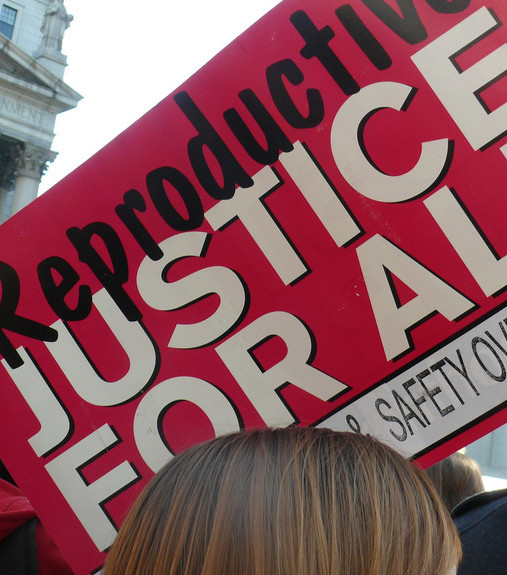
Five Things You Can Do Right Now for Abortion Rights
With Roe in possible jeopardy, now is the time for advocates of reproductive justice to take—yet another—stand. It is also time that we admit it: we can no longer wait for the laws to be threatened before we act.
It is all too easy to feel hopeless when headlines read like scenes from a dystopian novel. When everything is a worthy cause—immigrant families, the environment, reproductive rights—it becomes difficult to allocate resources of time and money.
It’s okay to start small. Here are some ways you can advocate for reproductive rights using the resources you have.
1 – If you have some money to give:
If you have the means, donate to an abortion fund. Abortion is already all but illegal in many places. Abortion funds are the groups that enable women take time off from work, travel to a clinic, and pay for the procedure. You can also donate to a local abortion clinic in your state or, if you’re fortunate enough to live in an area where rights are unrestricted, give in a state where there is dire need for better reproductive health access.
Donate to grassroots organizations like Reproaction that prioritize people of color, people in the LGBTQ+ community, and poor people. The current fight for Roe is largely white and wealthy—something that needs to change if we are to make real progress.
2 – If you have time, but not a lot of it:
Make some calls!
In order for Brett Kavanaugh to be confirmed, only a simple majority of the Senate needs to vote for his confirmation. Currently there is a Republican majority in the Senate, but it is a narrow one. Two Republican senators have voted pro-choice in the past, and these senators will be key in Kavanaugh’s confirmation process. Here are the names and numbers of those senators:
ME – Susan Collins – (207) 622-8414
AK – Lisa Murkowski – (907) 271-3735
And if you aren’t a constituent of one of these two, call anyway to remind them that women around the nation will hold them responsible if they fail to stand up for the right to choose.
3 – If you’ve got time and you’re ready for a fight:
Make more calls and do more research. If you live in a state that’s already on the brink, connect with activists through your local Planned Parenthood or the Center for Reproductive Rights and ask what they need most—calls to officials? Feet on the ground for protests?
Right now, there are seven states with only one abortion clinic serving the whole spread-out population: Kentucky, Mississippi, Missouri, North Dakota, South Dakota, West Virginia, and Wyoming. Some women in Alaska, Kansas, Nebraska, North Dakota, South Dakota and Texas have to travel over 180 miles to obtain an abortion.
Even if you’re in a “safe” state, you can get involved in (odd though this may sound) preventive activism on the state level. Find out what laws your state has on the books to protect reproductive health should Roe fall, and who on the state level is committed to shoring up abortion rights. In New York, for instance, a slim majority in the state legislature has prevented the Reproductive Health Act from passing. But electing pro-choice candidates this fall could change that.
4 – If you have extra time and energy:
Ask yourself and these friends the questions posed by Robin Marty in her piece “What To Do When ― Not If ― Roe Vanishes.”
- Will you be ready to open your home to those who have to travel and potentially stay in town for days to make and keep an appointment?
- Will you help to caravan women who need to pass through multiple states to get to a clinic but can’t afford a bus or gas?
- Will you provide grocery money for women who have spent their last dollars on getting an abortion?
- Will you donate your airline miles so a patient can obtain a last-minute ticket for an appointment?
5 – If you are committed to the cause to the very fiber of your being.
Read up on (and spread awareness of) what it will look like in a post-Roe world.
Extra-legal abortions will look different from what they did in the 1970s. A “medication abortion,” or a combination of mifepristone and misoprostol, allows for a safe (FDA and American College of Obstetricians and Gynecologists-approved) and more private way to terminate a pregnancy. Misoprostol can also be used on its own, inducing bleeding and symptoms similar to a miscarriage. The government of Wales recently legalized take-home medical abortion pills. In Cuba, women are offered “menstrual regulation” without a pregnancy test if their period is two weeks late. Activists need to think about how Misoprostol and Plan B can be utilized safely to help Americans now as well as in a post-Roe world.
Overall, we know that handwringing won’t help. Instead, think about the small ways you can protect yourself and others before the Kavanaugh hearings for the vacant seat on the U.S. Supreme Court even begin.




